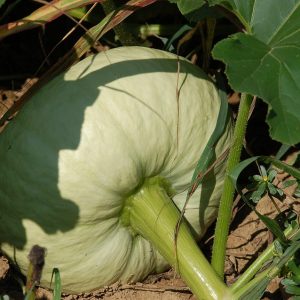This online course will teach you about how to manage heritage and significant gardens. This is a great course for professional development for lanscapers, superintendents, park managers and curators.
- Discuss efficient management strategies to ensure plant’s long term survival.
- Evaluate sources of funding for notable gardens
- Discuss the issues concerning presentation of a site to visitors
Parks, gardens or pre-conceived grounds all come under the designed landscape umbrella. This also includes parklands, woodlands, water, notable formal and informal gardens. Some areas may be of some scientific or historical significance or contain a wide range of wildlife.
E-Learning Structure
The duration of this online course is 100 hours. This consists of 9 in-depth lessons:
1.Role and Formulation of Conservation Management Plans
- Introduction: types of notable landscapes
- The role of conservation management plans
- Why research is important
- National registers
- Other sources of information
- Gathering and organising the documentary information
- The site survey
- Reporting the research
- Formulating conservation management plans
- Writing the plan
2.Consult Public and Interested Parties, Statutory and Non-Statutory Consultees.
- The consultation process
- Stakeholders
- Community participation strategy
- Collecting and analyzing data
- Primary data research
- Secondary data research
- Steps for collection and analysis of data
- Planning a formal survey
- Designing a questionnaire
- Common problems
- PBL project to formulate criteria required for the successful consultation with all relevant stakeholders, in the implementation of a maintenance program for a notable garden.
3. Role of Public and other Sources of Funding
- Funding restoration and conservation
- Examples of funding objectives
- Large funding bodies
- Other funding bodies
- Grant aid criteria
- Funding applications
- Other sources of funds
- Other cost considerations for sites open to the public
- Plant sales, garden shop, tea rooms, etc
4. Planning for Renewal of Plant Features
- Plant surveys
- Current plantings
- Other considerations
- Using experts
- Trees
- When not to retain a tree
- Sourcing plant material
- Collecting seed
- Selecting a parent plant
- Timing
- Method of seed collecting
- Removing seeds
- Replanting strategies
5. Developing New Features within Existing Landscapes
- Type of actions: preservation, rehabilitation, restoration, reconstruction
- Principles to follow
- Car parks
- Surfacing
- Pebble and cobble paving
- Fencing
- Dry stone walls
- Steps
- Ramps
- Railings
- Retaining walls
- Brick
- Drainage
- Timber
- Stone
- Rockeries
6. Programming Repair of New and Existing Hard Landscape Features.
- Introduction
- Action plans: preparing maintenance management schedules
- Managing and storing records
- Hard copy information
- Classifying information
- Active and inactive records
- Data protection
- Fundamental maintenance tasks: drainage, paving
- Maintaining stone and brick walls
- Maintaining ponds
- PBL Project to formulate a Maintenance Schedule for the repair of new and existing hard landscape features.
7. Creating New Gardens and Landscapes.
- Principles of landscape design
- Design elements
- Gathering site information
- The base plan
- Basic surveying
- Design drawing
- Completed designs and plans
- Park design
- Identifying Required Staff Skills
- Staff management, training and associated issues
- Skill set required for workers in historic parks and gardens
- The skills crisis
- Training schemes
- Volunteer labour
- Skills audits and training plans
8. Identifying skills shortages
- Conducting a skills audit
- Training programs
- Workplace health and safety
- Identifying hazards
- Risk control methods
- Conducting a safety audit
- Assessing risks
9. Adapt Historic Gardens and Designed Landscapes for Modern Use
- Presenting historic gardens and designed landscapes
- Visitor interpretation
- Marketing and PR
- Visitor facilities
- Equal access
- Access strategy
- Managing wear and tear, vandalism, theft
- Managing legislative requirements (eg. health and safety, equal access).
- PBL project to adapt a historic garden or designed landscape for modern use.
Course Aims
- Examine how conservation management plans for designed landscapes are formulated and how the information gathered is evaluated and verified
- Examine and explain the role of public and interested parties, statutory and non-statutory consultees.
- Examine the role of public funding; evaluate other sources of funding; discuss the implications of grant aid criteria
- Explain issues and procedures associated with the renewal of plant features.
- Develop and outline strategies for creating new features within existing landscapes.
- Describe the processes involved in creating new gardens or landscapes.
- Manage wear and tear on historic gardens and designed landscapes
- Determine appropriate work programs for repair and maintenance of hard landscape features.
- Identify and outline staffing management and training issues, determine labour skill sets requirements.
How Does A Warnborough Online Course Work?
You can start the course whenever is convenient for you. You will be studying from home and have access to support from our qualified tutors. Practical exercises and research tasks will be set at the end of each lesson – including an assignment. You will submit this assignment to your course tutor, who will mark your work and give you constructive feedback and suggestions.
If you have any questions please contact us.





